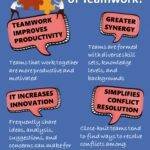
What is Appreciative Inquiry?
Appreciative inquiry is about seeking the best in people – in the way they work, they live, and they behave. Initially, appreciative inquiry (AI) was a “fundamental shift in the overall perspective of organizational development that took into account the entire human functioning – including strengths, possibilities, and success.”
AI tools and applications are realistic and straightforward. They are flexible and easy to use, and here are some practical tips on how we can make the most of them:
Select positivity as the prime focus
An efficient appreciative inquiry model focuses more on what has worked best for the company rather than what did not work out. For example, individuals or teams who rely on a positive AI approach would replace negative questions with more positive orientated ones.
For example: “why were clients unhappy and complained about us?” could be replaced with affirmative inquiries such as “what made our clients happy earlier? Can we improvise on the same line?”
A positive shift in the questions we ask ourselves and the company as a whole is the first and a significant step to bringing about the desirable changes in the workforce. The main idea here is to attend more to what ‘we want’ and less on what ‘we don’t want.’
Explore the exceptionality of the methods
Positive questions rewire our brain to filter only the fruitful pieces of information and focus on our internal strengths. An excellent way to ensure this happens is to investigate and ask ourselves what went particularly well after applying appreciative inquiries.
Exploring the advantages of the questions helps in discovering their unique capabilities. It also helps with understanding which areas of functioning they facilitate the most. For example, we should understand whether it is the tone, or the language, or the content of the AI that brought about the positive consequences and identify those areas as the exceptionality of it.
Share to gain perspective
Appreciative inquiries extend to involve numerous individuals, and work wonders in creating a positive organizational change. When we share our life incidents, inspirational stories, and exchange perceptions with each other, the likelihood of creating a productive AI structure increases manifold. (See practical example)
Besides, it also allows for the smooth transmission of positive energy from one person to another and positively impacts our professional development (Capra, 2002).
Keep room for innovation and improvisation
Whether the AI was successful or not, it is always good to continue improvising them. We can do so by regularly monitoring the outcomes, communicating with leaders about new ways of implementing the strategies, or by developing Appreciative Inquiry workshops to spread awareness about the inquiry systems.
Whatever way we choose, the whole idea is to keep moving forward and explore the endless benefits of using appreciative inquiry.


